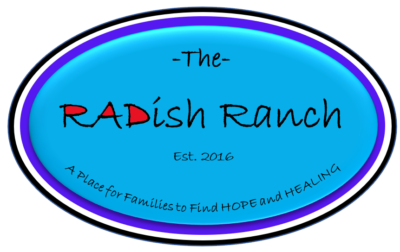“Reactive Attachment Disorder (RAD) is a serious condition in which an infant or young child doesn’t establish healthy attachments with parents or caregivers. Reactive Attachment Disorder may develop if the child’s basic needs for comfort, affection and nurturing aren’t met and loving, caring, stable attachments with others are not established.
With appropriate treatment, children who have Reactive Attachment Disorder may develop more stable and healthy relationships with caregivers and others. Treatments for Reactive Attachment Disorder include learning how to create a stable, nurturing environment and providing positive child and caregiver interactions. Parent or caregiver counselling and education are also helpful.”
– Mayo Clinic
– – – – – – – – – – – – – –
“When children are unattached they lack an internalized object. Because of this, they do not mature but instead continue to be self-centered, impulsive, and “babyish.” Their concern is always, “What’s in it for me?”
“Breaks in attachment lead to feelings of anger and rage, grief and hopelessness, poor impulse control and a failure to learn the basic social and cognitive skills necessary for a healthy life.” (High Risk, 1987)
Risk factors that if experienced may lead to Reactive Attachment Disorder:
- Unwanted pregnancy
- In-utero exposure to trauma, drugs, and/or alcohol
- Physical, emotional, and/or sexual abuse
- Physical and/or emotional neglect
- Sudden separation from primary caregiver (i.e. illness or death of mother, severe illness or hospitalization of the baby, adoption)
- On-going pain (colic, chronic ear infections, hernias)
- Constant change of daycares or using providers who don’t use bonding
- Mom with chronic depression (pre- or post-birth)
- Several moves and/or placements (foster care, failed adoptions)
- Unprepared mothers with poor parenting skills
- Caring for baby on a timed schedule or other parent-centered parenting
Symptoms/Behaviours of Reactive Attachment Disorder in children (between 4 and 12 years old):
- Superficially engaging or charming
- Lack of eye contact on parents’ terms
- Indiscriminately affectionate with strangers
- Not affectionate on parents’ terms
- Destructive to self, others, and material things (“accident” prone)
- Cruelty to animals
- Lying about the obvious (crazy lying)
- Stealing
- Lack of impulse controls (frequently acts hyperactive)
- Learning lags
- Lack of cause and effect thinking
- Lack of age-appropriate conscience development
- Abnormal eating patterns
- Poor peer relationships
- Preoccupation with fire
- Preoccupation with blood and gore
- Persistent nonsense questions and incessant chatter
- Inappropriately demanding and clinging
- Abnormal speech patterns
- Triangulation of adults
- False allegations of abuse
- Presumptive entitlement issues
- Parents appear hostile and angry
High-risk symptoms/behaviours of Reactive Attachment Disorder in infants:
- Weak crying response or constant crying
- Tactile defensiveness (flinching or startling after 8 weeks of age)
- Poor clinging or holding on
- Resistance to cuddling, seems “stiff as a board”
- Poor sucking response
- Poor eye contact, lack of tracking (following)
- Developmental delays
- No reciprocal smile response (they don’t return smiles)
- Indifference to others (no “stranger anxiety” after 6 months of age)
- Self-abuse (head banging, etc.)
Can a child heal from Reactive Attachment Disorder? YES!
Many, many children heal from Reactive Attachment Disorder through a combination of therapeutic parenting, attachment & trauma therapy, and brain-based interventions.
Children learn to overcome trauma, receive and give love, develop an age-appropriate conscience, and become kind, loving, and beautiful individuals. They not only survive, but thrive!
Head over to our podcast to hear the storied of healing from kids and families who have been there! LISTEN HERE.
“How wonderful it is that nobody need wait a single moment before starting to improve the world” Anne Frank
